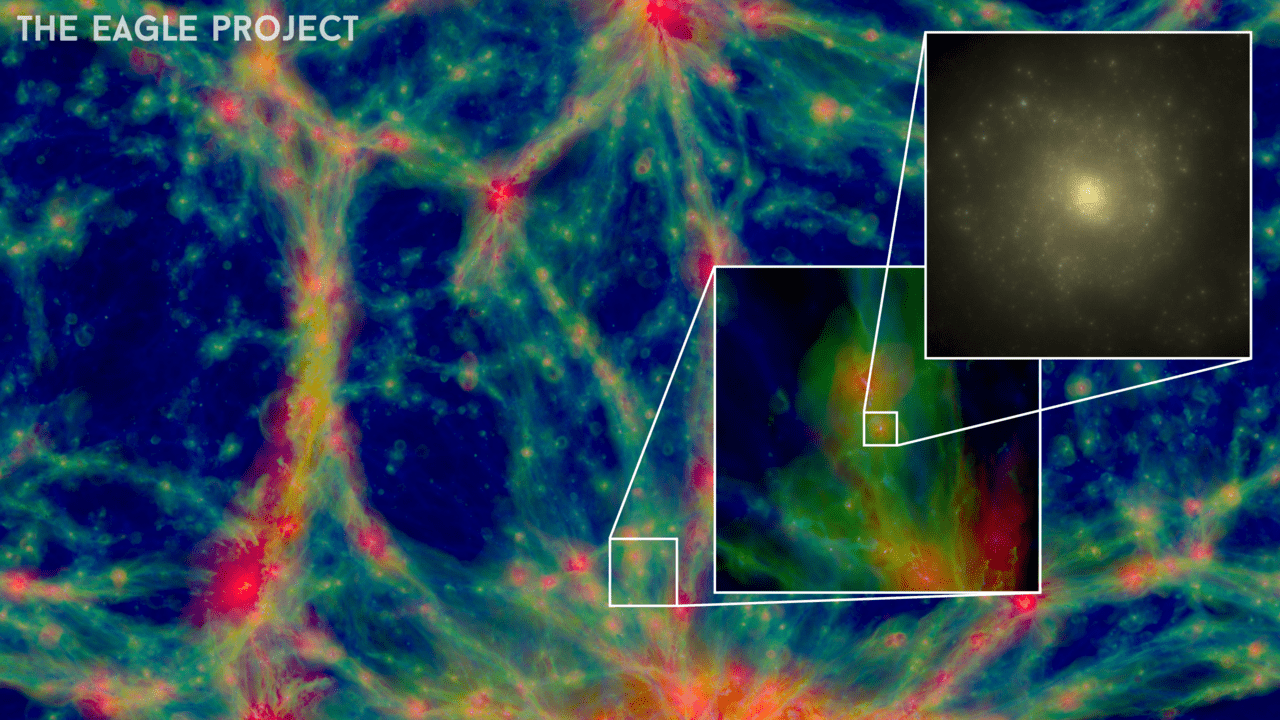Astronomy is, by definition, intangible. Traditional laboratory-style experiments that utilize variables and control groups are of little use to the scientists who spend their careers analyzing the intricacies our Universe. Instead, astronomers rely on simulations – robust, mathematically-driven facsimiles of the cosmos – to investigate the long-term evolution of objects like stars, black holes, and galaxies. Now, a team of European researchers has broken new ground with their development of the EAGLE project: a simulation that, due to its high level of agreement between theory and observation, can be used to probe the earliest epochs of galaxy formation, over 13 billion years ago.
The EAGLE project, which stands for Evolution and Assembly of GaLaxies and their Environments, owes much of its increased accuracy to the better modeling of galactic winds. Galactic winds are powerful streams of charged particles that “blow” out of galaxies as a result of high-energy processes like star formation, supernova explosions, and the regurgitation of material by active galactic nuclei (the supermassive black holes that lie at the heart of most galaxies). These mighty winds tend to carry gas and dust out of the galaxy, leaving less material for continued star formation and overall growth.
Previous simulations were problematic for researchers because they produced galaxies that were far older and more massive than those that astronomers see today; however, EAGLE’s simulation of strong galactic winds fixes these anomalies. By accounting for characteristic, high-speed ejections of gas and dust over time, researchers found that younger and lighter galaxies naturally emerged.
After running the simulation on two European supercomputers, the Cosmology Machine at Durham University in England and Curie in France, the researchers concluded that the EAGLE project was a success. Indeed, the galaxies produced by EAGLE look just like those that astronomers expect to see when they look to the night sky. Richard Bower, a member of the team from Durham, raved, “The universe generated by the computer is just like the real thing. There are galaxies everywhere, with all the shapes, sizes and colours I’ve seen with the world’s largest telescopes. It is incredible.”
The upshots of this new work are not limited to scientists alone; you, too, can explore the Universe with EAGLE by downloading the team’s Cosmic Universe app. Videos of the EAGLE project’s simulations are also available on the team’s website.
A paper detailing the team’s work is published in the January 1 issue of Monthly Notices of the Royal Astronomical Society. A preprint of the results is available on the ArXiv.


O.K. I looked over the paper.
First, these people seem to really know the structure of Galaxies. It is interesting to see the novel technique to explain stages of evolutionary development.
None the less, the paper is not based on “Fundamental Principals” (as admitted in the paper), and requires a typical “after the fact” fix to work. “We see this happening, so this must be occurring this way.
It would be interesting to see how the evolution corresponds to quasar distribution/evolution/Cosmological Density.